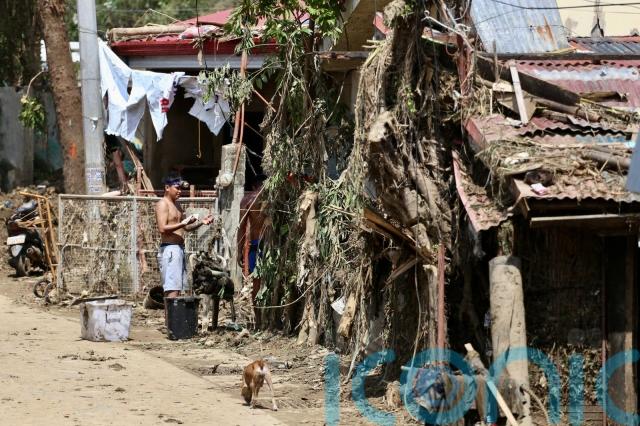
Super Typhoon Fung-wong, the biggest storm to threaten the Philippines this year, has started battering the country’s north-eastern coast ahead of making landfall, knocking out power, forcing the evacuation of more than a million people, and prompting the defence chief to urge many others to flee to safety from high-risk villages before it is too late.
Fung-wong, which could cover two-thirds of the south-east Asian archipelago with its 994-mile wide rain and wind band, is approaching from the Pacific while the Philippines is still dealing with the devastation wrought by Typhoon Kalmaegi. That storm left at least 224 people dead in central island provinces on Tuesday before hitting Vietnam, where at least five were killed.
Philippine President Ferdinand Marcos Jnr has declared a state of emergency due to the extensive devastation caused by Kalmaegi and the expected calamity from Fung-wong, which is called Uwan in the Philippines.
Fung-wong, with winds of up to 115mph and maximum gusts of 143mph, was spotted by government forecasters before noon on Sunday over coastal waters near the town of Pandan in eastern Catanduanes province, where torrential rain and fog have obscured visibility.
The typhoon is expected to track north-westward and make landfall on the coast of Aurora or Isabela province later on Sunday or early Monday, state forecasters said.

Tropical cyclones with sustained winds of 115mph or higher are categorised in the Philippines as a super typhoon, a designation adopted years ago to underscore the urgency tied to more extreme weather disturbances.
More than one million people have been evacuated from high-risk villages in north-eastern provinces, including in Bicol, a coastal region vulnerable to Pacific cyclones and mudflows from Mayon, one of the country’s most active volcanoes.
Defence Secretary Gilberto Teodoro Jnr, who oversees the country’s disaster response agencies and the military, warned about the potentially catastrophic impact of Fung-wong in televised remarks Saturday.
He said the storm could affect a vast expanse of the country, including Cebu, the central province hit hardest by Typhoon Kalmaegi, and metropolitan Manila, the densely populated capital region which is the seat of power and the country’s financial centre.

More than 30 million people could be exposed to hazards posed by Fung-wong, the Office of Civil Defence said.
Mr Teodoro asked people to follow orders by officials to immediately move away from villages and towns prone to flash floods, landslides and coastal tidal surges. “We need to do this because when it’s already raining or the typhoon has hit and flooding has started, it’s hard to rescue people,” he warned.
As Fung-wong approaches with its wide band of fierce wind and rain, several eastern towns and villages lost power, Bernardo Rafaelito Alejandro, deputy administrator of the Office of Civil Defence said.
Authorities in northern provinces to be hit or sideswiped by Fung-wong pre-emptively declared the shutdown of schools and most government offices on Monday and Tuesday. At least 325 domestic and 61 international flights have been cancelled over the weekend and into Monday, and more than 6,600 commuters and cargo workers were stranded in at least 109 seaports, where the coast guard prohibited ships from venturing into rough seas.
Authorities warned of a “high-risk of life-threatening and damaging storm surge” of nearly 10ft along the coasts of more than 20 provinces and regions, including metropolitan Manila.
Subscribe or register today to discover more from DonegalLive.ie
Buy the e-paper of the Donegal Democrat, Donegal People's Press, Donegal Post and Inish Times here for instant access to Donegal's premier news titles.
Keep up with the latest news from Donegal with our daily newsletter featuring the most important stories of the day delivered to your inbox every evening at 5pm.